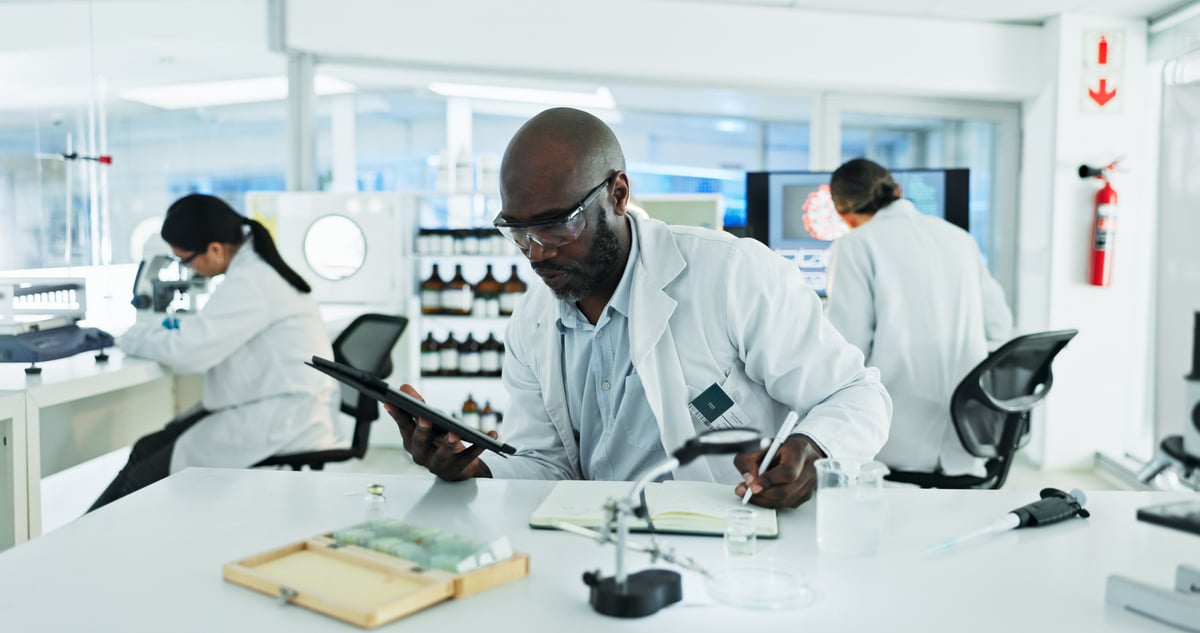Stocks of big pharmaceutical companies have been on a tear lately -- the SPDR S&P Pharmaceuticals ETF (XPH +1.80%) is up 15% since the beginning up the year, compared with 8.5% gains for the S&P 500, and up 28% since its low in early May. Drug stocks have been largely immune to the market's worries over trade wars, and were given a big boost when the Trump administration's plan to reduce drug prices turned out to be more benign to big pharma than had originally been feared.
The large-cap drug stock that has made the biggest gains in 2018 has been Eli Lilly (LLY +0.47%), which presented investors with an unusually attractive buying opportunity in February when it hit its 365-day low despite having some major catalysts in view. Now, the stock's up nearly 28% on the year, and has soared 19.5% since the company's second-quarter earnings report in July. But is Eli Lilly poised for more gains in 2018?
Lilly's second quarter had investors cheering
Lilly's Q2 results seemed to confirm some positive trends for the company, and it raised earnings guidance for the second time this year. Growth in sales of new drugs overcame the headwind of patent expirations on blockbusters like Cialis, and revenue grew 9.1% to $6.36 billion, with non-GAAP earnings per share jumping 35% to $1.50. Those results beat analysts' estimates for EPS of $1.30 on sales of $6.05 billion by a mile, and the company boosted full-year, non-GAAP EPS guidance by 6% to a range of $5.40 to $5.50, which at the midpoint would be 27% higher than last year's earnings.

Image source: Getty Images.
That huge profit growth was largely a result of the late 2017 corporate tax cuts, but Eli Lilly's underlying fundamentals also remained strong. Domestic revenue increased 8% to $3.60 billion and international sales grew 10% to $2.75 billion. Volume in pharmaceuticals grew a healthy 8% in constant-currency terms, with 11% domestic growth. Gross margin widened by 0.2 percentage points to 73.2% overall, and excluding currency effects, non-GAAP gross margin expanded 1.3 percentage points, due to manufacturing efficiencies. Non-GAAP operating income as a percentage of revenue was up nearly 6 percentage points over Q2 2017.
New drugs are fueling growth
Eli Lilly's financial performance was dragged down for several years due to the expiration of patent protections on some of its best-selling drugs, but Q2 illustrated how it has turned the situation around. Sales growth for its new products compensated for declines in old ones by a wide margin. Worldwide volume growth of new products was 12.4%, while the drop in sales volume for older drugs that have lost exclusivity amounted to 6.2%.
The company's once-weekly diabetes drug Trulicity was the standout, as it has been in recent quarters. Trulicity is considered a new class of diabetes treatments called GLP-1 receptor agonists, which works by stimulating the body to produce more insulin. The GLP-1 market is growing at a 26% rate, and Trulicity is grabbing market share, with sales growing 62% and contributing almost $300 million in new sales to the company's year-over-year revenue increase. Sales of long-lasting insulin Basaglar grew 133%, and added another $115 million of new sales. Taltz, a treatment for psoriasis and psoriatic arthritis, had 59% growth.
Lilly's portfolio is also loaded with newly approved drugs that aren't contributing much in sales at the moment, but have the potential to keep revenue growth humming for a long time. Notable among these is Verzenio, which the company launched in the U.S in Q1, and which generated $58 million in sales in Q2. The drug is a first-line treatment for metastatic breast cancer, and could reach blockbuster status in the next few years. Olumiant, a JAK inhibitor for rheumatoid arthritis launched in the U.S. in Q2, and generated $45 million in worldwide sales in the quarter. It's forecast to have annual sales of $1.4 billion by 2024.
Unlike many other big pharma companies, Lilly isn't reliant on a single big-selling drug for significant chunk of sales, and therefore has lower risk of sudden declines. Its biggest seller in Q2 was Trulicity at 12%, followed closely by its insulin product Humalog, which actually had a 13% sales increase in the quarter. Cialis sales experienced the largest declines due to rising competition -- it accounted for only 8.5% of revenue in the quarter, and sales declined by 14%, or $89 million.
An ample pipeline is moving forward
Lilly also possesses a rich pipeline of drug candidates that could fuel growth for a long time to come, with 21 phase 3 and 11 phase 2 trials underway. Notable among them are three non-opioid pain drugs in later stages of development, including galcanezumab, which the company submitted to the FDA in December for migraine, and for which it recently reported positive results in a phase 3 trial for cluster headaches. Another, tanezumab, is in phase 3 studies for lower back pain, osteoarthritis pain, and cancer pain.
An important addition to Lilly's pipeline came from this year's acquisition of ARMO BioSciences for $1.6 billion. The company picked up pegilodecakin, a cancer-fighting immunologic that is in a phase 3 trial in pancreatic cancer, and earlier-phase trials in lung and renal cell cancer, melanoma and other solid tumor types.
A spin-off with investor appeal
An important catalyst is on the horizon with Lilly's planned spin-off of its animal health division, Elanco. Lilly had said it was evaluating alternative for the business, and recently announced it has filed a registration statement with the SEC for an initial public offering of less than 20% of Elanco, which it will complete before the end of the year. Lilly plans to completely separate from Elanco eventually.
Lilly should get an immediate benefit to its growth profile once Elanco is off the company's books. Despite the fact that animal health is a growing industry, Elanco has been saddled with products that aren't performing well, and its growth has stagnated while it discontinues them. Lilly's revenue growth in 2017 was 7.8%, but excluding Elanco's results, it would have been 9.5%. So far in 2018, Elanco has been a drag on Lilly's growth rate to the tune of 1.5 percentage points.
The spin-off itself will likely produce some value for Lilly's shareholders. Pfizer (PFE +0.66%) spun off its animal health business in 2013 as Zoetis (ZTS +1.62%), which has been very well-received by investors. Zoetis sells for 7.6 times analysts' consensus estimate for this year's sales vs. 4.7 times for Lilly. Zoetis had 8% revenue growth last year, which certainly beat Elanco's 2% decline. But Lilly said in the Q2 conference call that revenue growth for Elanco's core products -- those that will be left once the company completes its program of eliminating underperformers -- was 8% in the quarter.
Lilly has a cash hoard and plenty of options
Lilly's deep pockets are another reason for investors' recent optimism about the company. Repatriation of offshore profits and strong cash flows have increased the company's capacity to make moves that could increase shareholder value. Beside the ARMO BioSciences acquisition, it also bought AurKa Pharma, a company with an early-stage drug candidate for treating solid tumors, for $575 million in Q2. The company is actively looking for other acquisition targets to bolster its core strengths, but in the meantime, it's using cash for share buybacks. It spent $2.05 billion on its own shares in Q2, besides paying out $1.17 billion in dividends and retiring $1.0 billion in long-term debt.
How much further will the stock go in 2018?
The strong results so far this year explain why investors have bid up Lilly's stock more than any of its peers. But with the stock hitting levels it hasn't seen in 20 years, is there still time to jump in?
It's hard to imagine that shareholders will reap stock price gains similar to those the first eight months of 2018 produced over the rest of the year. The market belatedly rewarded Lilly for higher sales volumes from its portfolio of new drugs, and the share price now anticipate some nice quarters of growth ahead. Those are likely to occur, but actually, volume growth has leveled off a bit. Pharmaceutical volume in constant currency and minus the animal health business rose 8% in the first half of 2018. That was a deceleration from the 11% growth in the first half of 2017 and 10% growth for the full year.
The company may also lose a modicum of its revenue-boosting leverage. Lilly raised some prices in the U.S. last year, a move that delivered a 7% boost in domestic human pharmaceutical revenue and a 3% tailwind to worldwide pharma sales. In the first half of 2018, the lift in pharmaceutical sales attributable to price hikes was down to 1%. In the conference call, Lilly execs indicated that they were being cautious about list price increases since the Trump drug plan announcement in May, and are not assuming further increases for the rest of the year. The impacts from its caution on price increases and a slightly lower volume growth rate have been masked this year by a 3% benefit from currency exchange effects, which might not continue.
The share price run-up has made Lilly the most expensive stock among its peers. Its dividend yield of 2.13% is rock-solid dependable, but it is lower than that of any other drug manufacturer with a market capitalization above $100 billion. Lilly's valuation of more than 19 times analysts' estimate of 2018 earnings also is rich compared to other big pharma stocks.
Both currency movements and the impact of politics on drug pricing are impossible to predict, which makes the near-term outlook for Eli Lilly's headline numbers cloudy, and the valuation is certainly less compelling than it was earlier in the year. I think long-term investors who own the stock should stick with it, though, because the company has positioned itself for steady, high single-digit sales growth and double-digit earnings growth for a long time. Investors looking for a place to invest new money might find better opportunities in some of the other big pharma stocks, or may see a better price for Eli Lilly later in the year.






